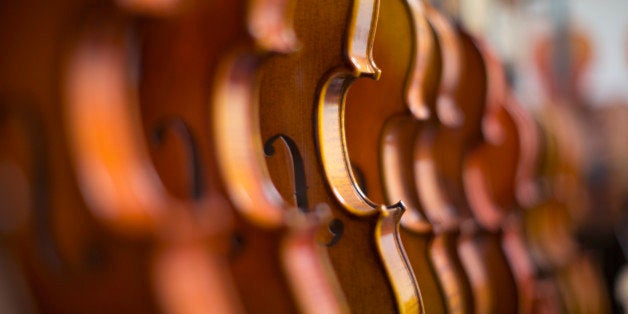
One of the most dramatic moments in classical music is when an orchestra plays a crescendo, starting from a quiet mummer and ending in an immense fortissimo. Listening to this can raise the hairs on the back of your neck and send shivers down your spine. The intensity and emotional impact of the crescendo might appear to be in the hands on the composer and musicians, but now new research shows that in certain concert halls, the right acoustic makes the crescendo sound much louder at the end and hence much more dramatic.
A concert hall plays a vital role in embellishing and improving the sound of an orchestra. I got a demonstration of this on a recent visit to Aalto University near Helsinki, Finland. I was visiting Tapio Lokki, an associate professor who, along with colleagues, has captured the acoustic essence of 10 European concert halls. They made measurements of how the sound propagates around each hall using a virtual orchestra formed from 34 loudspeakers on the stage. These measurements of the hall acoustics are combined with specialist dry recordings of each instrument playing, to recreate the sound of an orchestra playing in the different auditoria. I was taken on a virtual tour of the concert halls, flicking between the various auditoria by a simple click on a touch screen.
One demonstration Tapio showed me was an orchestral crescendo from the first movement of Beethoven's Seventh Symphony. We listened to it played in the Berlin Philharmonie and then played in the Musikverein in Vienna. As the music increased in volume in the Musikverein, it sounded like the orchestra got wider, and at the end of the crescendo it was distinctly louder. I had the advantage of hearing this surrounded by 24 loudspeakers in Tapio's listening room, but even over a pair of headphones, the difference is apparent.
As the audio is recreated from the same orchestral recording, with the same loudspeaker set-up on the stage and with the same distance from the stage to the listener's seat, any differences you hear can only come from sound reflecting off the surfaces of the concert hall. The end of the crescendos in the Musikverein sound louder due to the strong reflections bouncing off the walls that arrive to the listener from the sides.
When an orchestra goes through a crescendo, not only does the power produced by the orchestra increase, but more high frequencies are created, and the entire timbre of the orchestra becomes brighter. How loud this appears to a listener depends not only on the absolute power in the sound wave but on the direction from which it arrives. For some high frequencies the ear is more sensitive to sound coming from the side than to that arriving from straight ahead. In halls shaped like shoeboxes, like the Musikverein, there are strong early reflections from the sides. In other types of halls, these reflections are less strong.
Does this mean all concert halls should be shaped like shoeboxes? Not necessarily, but if we want to hear dramatic crescendos within the complex shapes that architects like to design nowadays, these halls must provide enough high-frequency lateral reflections to allow the orchestra to fully express itself.
